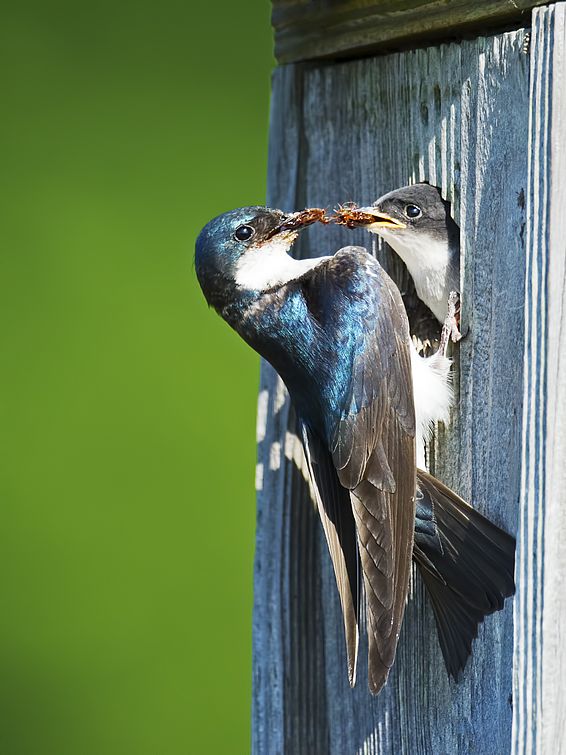Many songbirds are nesting earlier in spring because of warmer temperatures brought about by climate change. For nestlings, however, this leads to a higher risk of temperature variability in the form of cold snaps and heat waves. Such extremes result in more nest failures. These findings come from a study with participation of the Swiss Institute for Forest, Snow and Landscape Research WSL just published in the journal Nature Communications.
"When we talk about temperature changes, the focus is mostly on averages," said Conor Taff of Cornell University, who co-authored the study with the WSL’s Ryan Shipley. "But all creatures, including humans, interact with weather conditions right in the moment, not with long-term averages. Even a one or two-day period when it’s really cold or really hot can be incredibly challenging even if the average temperature hasn't changed. Changing temperature averages and temperature variability are two different components of climate change."
To understand how temperature variability might affect nesting success, the researchers analyzed 300,000 breeding bird records in the USA and Canada between 1995 and 2020. They pinpointed the coldest three-day day period and the hottest three-day period for each one of the nests and then looked at whether those values predicted lower nesting success. Success was measured by how many nestlings survived to fledge.
Dependent on insects for food ¶
"We found that 16 of the 24 species we studied had reduced reproductive success when a cold snap occurred during the incubation or nestling stages," Taff said. "Eleven of 24 had reduced success when a heat wave occurred during the breeding season. Aerial insectivores were the most sensitive to temperature extremes, especially cold."
The vast majority of birds feed insects to their young, regardless of their final diet, and cold snaps reduce insect availability. If these episodes occur when nestlings are most vulnerable, they can trigger a mass die-off. During a cold snap, adult birds may move away to find survivable conditions which leaves eggs and nestlings exposed to cold and lack of food.
"It's the nestlings that really get hit hard because they can't regulate their own body temperature yet," said Ryan Shipley of the SLF’s mountain ecosystems research group. "Nestlings also grow at an exponential rate during the first week or two of life and if insect activity drops because of a cold snap, the young birds likely won’t survive."
Taff and Shipley also examined 100 years of weather data to see if there have been changes in the timing of cold snaps and heat waves during the March through August breeding season in the United States and Canada. Although they found no clear pattern in the timing of temperature extremes, they do note that it's getting warmer everywhere.
"Even if nestlings somehow manage to survive a cold snap or heat wave, there may still be long-term consequences affecting the overall health of the birds," notes Shipley. "We're only looking at a brief snapshot during early life and cannot measure long-term health in an unbanded wild population."
Previous Tree Swallow studies by these authors have shown that temperature during development is important because it's directly linked to the rate of nestling growth and their body mass when they fledge. That, in turn, influences how likely they are to survive, make it through migration, and return to breed the following year. Therefore, changes in the variability and timing of temperature extremes and shifts in the breeding season can combine to bring about life-changing consequences for individuals and for bird populations.
Original press release: Cornell University
Always up to date: Subscribe to the WSL Newsletter
Contact ¶
Links and documents ¶
Taff, C.C., Shipley, J.R. Inconsistent shifts in warming and temperature variability are linked to reduced avian fitness. Nat Commun 14, 7400 (2023). https://doi.org/10.1038/s41467-023-43071-y
Copyright ¶
WSL and SLF provide image and sound material free of charge for use in the context of press contributions in connection with this media release. The transfer of this material to image, sound and/or video databases and the sale of the material by third parties are not permitted.
Cornell University: The use of this material is protected by copyright. Use is permitted only within stories about the content of this release. Redistribution or any other use is prohibited without express written permission of the Cornell Lab of Ornithology or the copyright owner.



